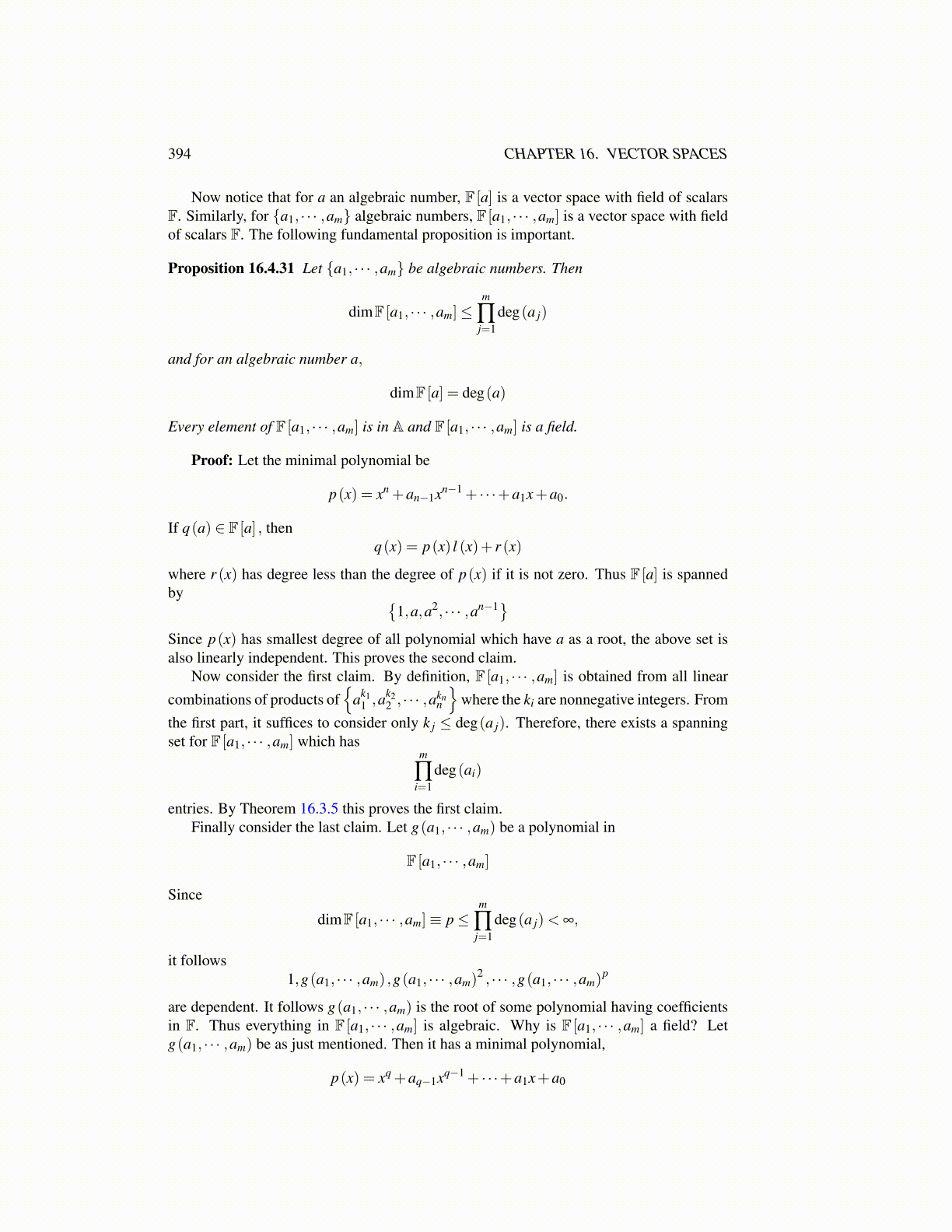
394 CHAPTER 16. VECTOR SPACES
Now notice that for a an algebraic number, F [a] is a vector space with field of scalarsF. Similarly, for {a1, · · · ,am} algebraic numbers, F [a1, · · · ,am] is a vector space with fieldof scalars F. The following fundamental proposition is important.
Proposition 16.4.31 Let {a1, · · · ,am} be algebraic numbers. Then
dimF [a1, · · · ,am]≤m
∏j=1
deg(a j)
and for an algebraic number a,
dimF [a] = deg(a)
Every element of F [a1, · · · ,am] is in A and F [a1, · · · ,am] is a field.
Proof: Let the minimal polynomial be
p(x) = xn +an−1xn−1 + · · ·+a1x+a0.
If q(a) ∈ F [a] , thenq(x) = p(x) l (x)+ r (x)
where r (x) has degree less than the degree of p(x) if it is not zero. Thus F [a] is spannedby {
1,a,a2, · · · ,an−1}Since p(x) has smallest degree of all polynomial which have a as a root, the above set isalso linearly independent. This proves the second claim.
Now consider the first claim. By definition, F [a1, · · · ,am] is obtained from all linearcombinations of products of
{ak1
1 ,ak22 , · · · ,akn
n
}where the ki are nonnegative integers. From
the first part, it suffices to consider only k j ≤ deg(a j). Therefore, there exists a spanningset for F [a1, · · · ,am] which has
m
∏i=1
deg(ai)
entries. By Theorem 16.3.5 this proves the first claim.Finally consider the last claim. Let g(a1, · · · ,am) be a polynomial in
F [a1, · · · ,am]
Since
dimF [a1, · · · ,am]≡ p≤m
∏j=1
deg(a j)< ∞,
it follows1,g(a1, · · · ,am) ,g(a1, · · · ,am)
2 , · · · ,g(a1, · · · ,am)p
are dependent. It follows g(a1, · · · ,am) is the root of some polynomial having coefficientsin F. Thus everything in F [a1, · · · ,am] is algebraic. Why is F [a1, · · · ,am] a field? Letg(a1, · · · ,am) be as just mentioned. Then it has a minimal polynomial,
p(x) = xq +aq−1xq−1 + · · ·+a1x+a0